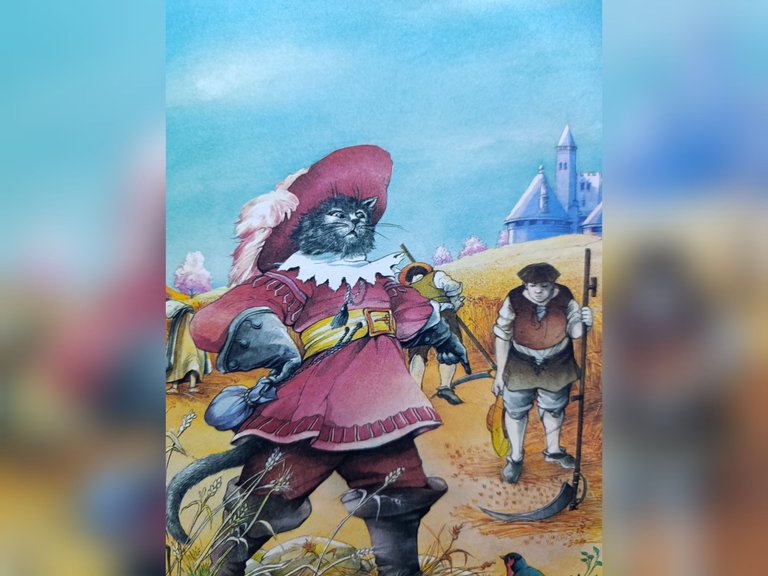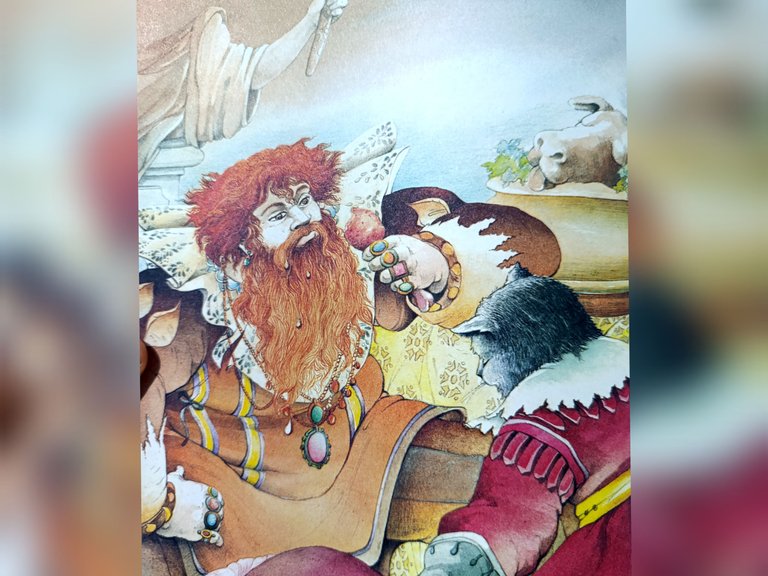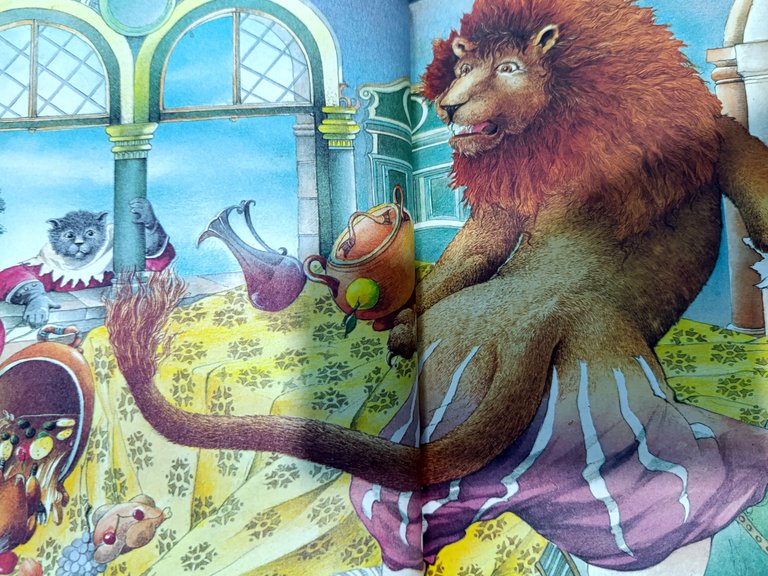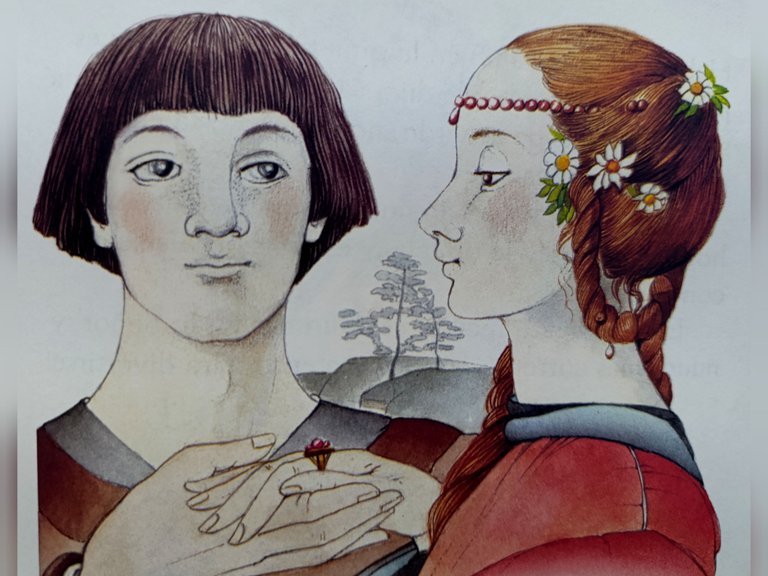Once again I return with more children's literature, this time with another classic The Puss in Boots, a work attributed to Charles Perrault, published in 1697. If you look closely, several fantastic elements can be found in this work, hence why it has always been popular with children.

By using a humanized cat as the main character, with the ability to talk, as well as being brave, cunning and shrewd, the narrative undoubtedly seeks to make children establish a relationship of sympathy and identification with a domestic animal that is very common.
Although Puss in Boots has been adapted several times, including an animated movie in 2011, the original story published by Perrault, beyond the obviousness of the talking cat, shows us an unscrupulous society where greed, deceit and even crime are justified in order to get what is desired.

If the story is analyzed with a deeper look, a strong social criticism can be noticed because the denouement shows us a happy ending, which is presented as a reward for a series of morally unacceptable actions. An ungrateful, envious and greedy son pretends to be a marquis to deceive an interested and selfish king, who offers his daughter, a princess without personality, as a trophy for the swindler.

In contrast, the cat, although manipulative and a liar, is presented in such a way as to appear sympathetic, in the same way that a rogue approaches his victims. Since the setting is a magical world, where, of course, anything is possible, the reader must suspend the notion of verisimilitude and accept as possible everything presented in the narrative.

The play presents a fearsome ogre as an antagonist character, but he succumbs in an absurd way to the cat's cunning. In this encounter, the ogre is the victim because he is stripped of all his belongings, including his castle. Perrault uses the stereotypes of fairy tales to insert an ogre into his story and justify his punishment, even though he has not committed any aggression against the other characters in this tale.

We are in the presence of a tale that uses the necessary elements to qualify it as childish, but in its story underlies a questioning of the society of that time. It is possible that Perrault wrote The Puss in Boots from oral stories that criticized in a veiled way the monarchy of Louis XIV, which was maintained for a period of 72 years.
Versión en EspañolUna vez más regreso con más literatura infantil, en esta ocasión con otro clásico El Gato con botas, obra atribuída a Charles Perrault, publicada en 1697. Si se mira con detenimiento, en esta obra se pueden encontrar varios elementos fantásticos, de allí que siempre ha sido popular entre los niños.

Al utilizar un gato humanizado como protagonista, con la capacidad de hablar, además de ser valiente, astuto y sagaz, la narración sin duda busca que los niños establezcan una relación de simpatía e identificación con un animal doméstico que es muy común.
Si bien El Gato con botas ha sido versionado en varias ocasiones, inclusive se hizo una película animada en el 2011, la historia original publicada por Perrault, más allá de la obviedad del gato parlante, nos muestra una sociedad inescrupulosa donde la codicia, el engaño y hasta el crimen se justifican para conseguir lo que se anhela.

Si el cuento se analiza con una mirada más profunda, se puede advertir una fuerte crítica social porque el desenlace nos muestra un final feliz, el cual se presenta como recompensa a una serie de acciones moralmente inaceptables. Un hijo malagradecido, envidioso y codicioso se hace pasar por marqués para embaucar a un rey interesado y egoísta, quien ofrece a su hija, una princesa sin personalidad, como un trofeo para el estafador.

En contraste, el gato, aunque manipulador y mentiroso, es presentado de tal manera que parezca simpático, de la misma manera que un pícaro aborda a sus víctimas. Al ser el escenario un mundo mágico, donde, por supuesto, todo es posible, el lector debe suspender la noción de verosimilitud y aceptar como posible todo lo que presenta la narración.

Y es que en la obra se presenta a un temible ogro como personaje antagonista, pero sucumbe de manera absurda ante la astucia del gato. En este encuentro, el ogro es la víctima ya que es despojado de todas sus pertenencias, entre ellas su castillo. Perrault se vale de los estereotipos de los cuentos de hadas para insertar a un ogro en su relato y justificar su castigo, aunque no haya cometido alguna agresión contra los otros personajes de este cuento.

Estamos en presencia de un cuento que se vale de los elementos necesarios para calificarlo de infantil, pero en su historia subyace un cuestionamiento a la sociedad del aquel entonces. Es posible que Perrault escribió El Gato con botas a partir de relatos orales que criticaban de forma velada la monarquía de Luis XIV, la cual se mantuvo por un período de 72 años.
✓Photos from my personal gallery, edited with Fotocollage.
✓Text translated with DeepL.
📙📙📙📙📙📙📙📙📙
✓Fotos de mi galería personal, editadas con Fotocollage.
✓Texto traducido con DeepL.
Posted Using INLEO

